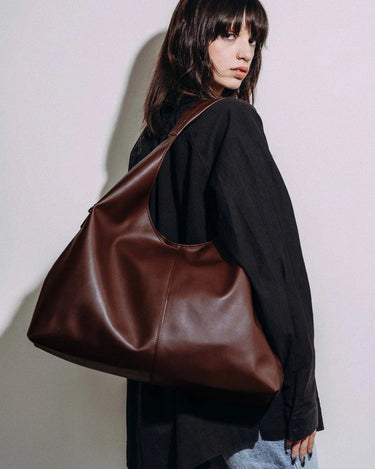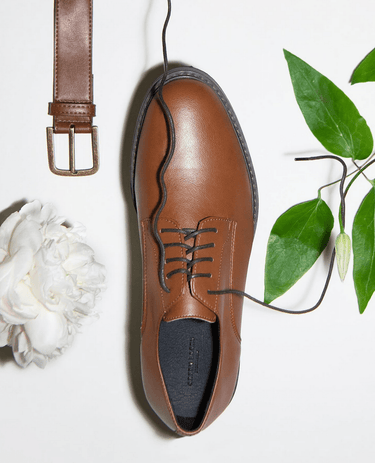How to Shop for Cruelty-Free and Vegan Beauty
Vegan living continues to rise – and it's not just our fridges and kitchen cupboards getting an animal-friendly makeover. Curating a vegan beauty routine is becoming an increasingly crucial move for consumers - and companies are picking up on it: global sales of beauty products described as "vegan" are expected to reach $20.8 billion by 2025.
But what really constitutes “vegan” beauty? And is it the same as “cruelty-free”? Not quite.
By Sascha Camilli: writer, speaker, activist, and vegan fashion expert.
 There is an important distinction between "vegan" and "cruelty-free", even if they often go hand in hand. Some products are cruelty-free but not vegan, and others may label themselves as vegan, but do not fulfil the criteria for being considered cruelty-free.
There is an important distinction between "vegan" and "cruelty-free", even if they often go hand in hand. Some products are cruelty-free but not vegan, and others may label themselves as vegan, but do not fulfil the criteria for being considered cruelty-free.
The labelling “cruelty-free” refers to animal testing. To be considered cruelty-free, a product has to be certified to be free from any tests using animals, both in the end product and in its ingredients. The tests cannot be performed by the company selling the product, nor can they have been outsourced to third parties.
Today, few companies want to admit that they engage in animal testing. If you find the question on their website, it's likely to say that they “never test on animals...unless required by law”. Pay attention to those last words. What they are likely to refer to is China, a lucrative market that is still holding on to its legal requirement that cosmetic products sold in its mainland be tested on animals. Positive developments are in the works: the Chinese government is slowly loosening its regulations and removing restrictions that force brands to test on animals. But as it stands, brands that sell their cosmetic products in China must still undergo animal testing, which means that no brand that sells in mainland China can actually be considered cruelty-free.
In 2013, the ground-breaking European sales and marketing ban on cosmetics tested on animals was brought in. Countries like India, Turkey, New Zealand, Guatemala and Israel followed with their own bans on animal testing for cosmetics. These pieces of legislation set out to outlaw the sales of any cosmetic product that had gone through any form of animal testing. But did this mean that any product sold in your local beauty shop was cruelty-free? Far from it. EU's chemical testing programme REACH allows substances to be tested on animals when there is a possibility of workforce exposure during the manufacturing process – quite a significant loophole.
So, whom can you trust when it comes to cruelty-free beauty? If you are in in Europe, Cruelty-Free International's Leaping Bunny is a a symbol to look out for. In the US? PETA's Beauty Without Bunnies is a programme certifying brands and products that do not test on animals – and also calling out those who still perform animal tests. Australian consumers should look out for a bunny symbol from the organisation Choose Cruelty-Free, which accredits cosmetics free from animal testing
“Vegan”, on the other hand, means that the product is free from ingredients derived from animals. You might think, hold on – there's animal-derived stuff in my face cream? Well, yes, there might well be. Animal-based ingredients that are often found in cosmetics include milk (e.g. from cows or sheep); tallow, which is made from boiled animal carcasses; lanolin, which comes from wool-bearing animals; and carmine, which is made from crushed bugs (yeah, you read that right) – the latter, a bright red colour, is a common ingredient in lipsticks, for example.
Knowing whether a product is vegan can be tricky – and there are quite a few examples of “vegan-washing”. “Companies have been known to make false or inaccurate claims about product suitability for vegans and this is especially true in the beauty products industry, where a lot of items contain ingredients derived from animals that are difficult to spot just from reading the label,” a spokesperson from the Vegan Society has said. “Some of them, such as cetyl alcohol, might be vegan on a rare occasion but most of the time it’s an ingredient that comes from sperm whales. Cetearyl alcohol, on the other hand, is vegan – it’s easy to confuse the two. There are many scientific names and multiple names for the same ingredient so it may get really confusing.”
There are several substances, like cetyl alcohol and glycerine, which are vegan on some occasions and not on others, making it tricky to become an expert label-reader. Certifications are rarer when it comes to vegan beauty, but they do exist: The Vegan Society has its own certification, and PETA's Beauty Without Bunnies label can be found on some vegan products. Overall, the onus is on brands to communicate whether their products are suitable for vegans. Luckily, more brands than ever are aware of what the term “vegan” means and can answer questions on whether their products are vegan, which makes it easier for consumer to find vegan-friendly products (also all the Beauty items at Immaculate Vegan are both cruelty free and vegan). And once you find your favourites, it's likely you'll keep going back – with the market growing every day, the offering is more sophisticated and higher in quality than ever before.
About Sascha
Sascha Camilli is the founder of the world's first digital vegan fashion magazine, Vilda Magazine and the host of fashion podcast Catwalk Rebel. She was selected as one of Glamour UK's Most Empowering Nu-Gen Activists and is a frequent public speaker on the topic of vegan fashion and material innovation. Her book Vegan Style is out now on Murdoch Books. For more about Sascha, read our interview with her.
For more articles like this in your inbox, sign up to our newsletter, and get up to 20% off your next purchase.
Cover image by Clockface Beauty
Related Articles



















































































































